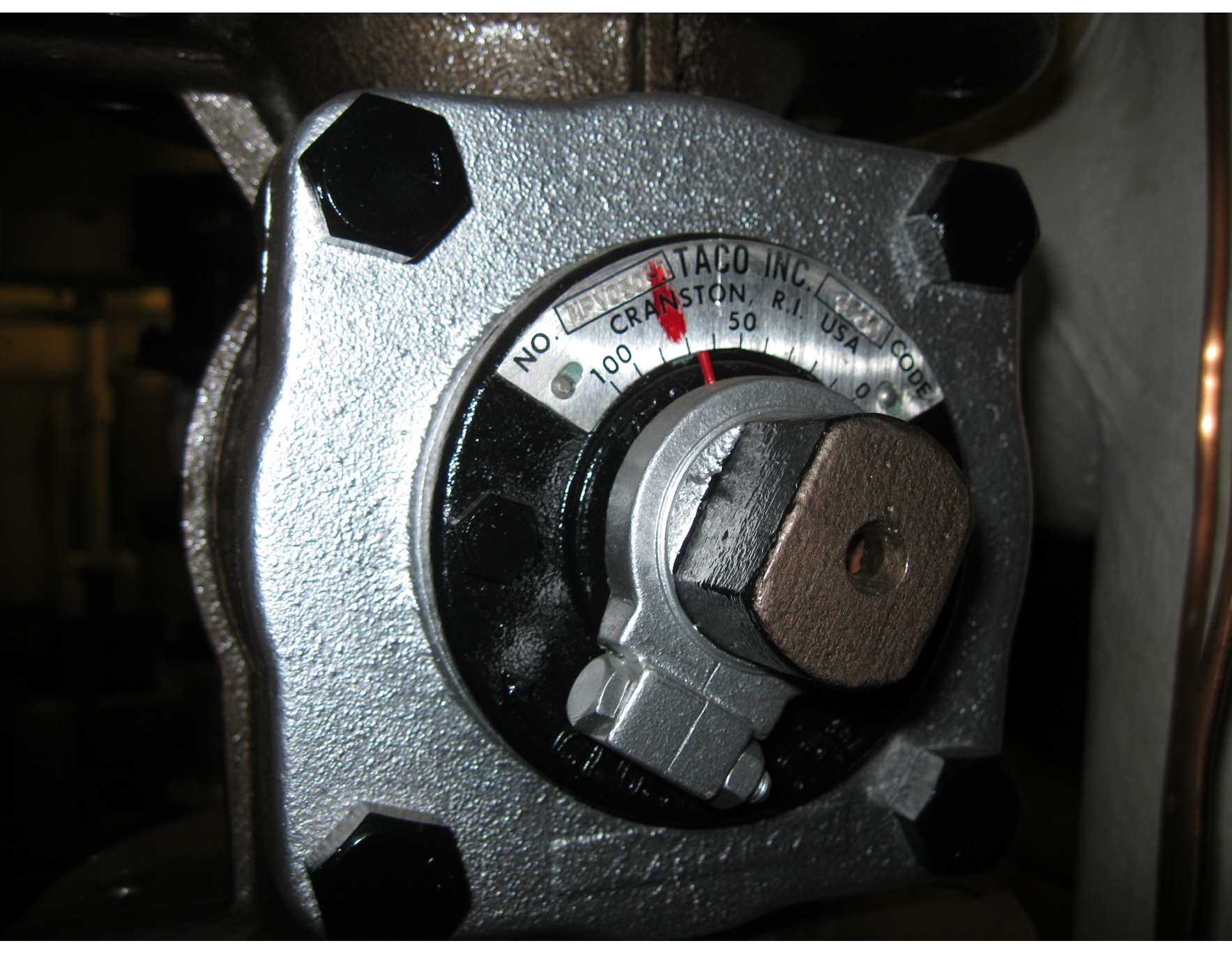Remove the Brakes on Your Pumps by Installing VFDs
It is quite commonplace to find variable frequency drives (VFDs) installed on pumps in any new construction or retrofit project and of course, they are necessary for any type of variable volume pumping system. However, VFDs can also be utilized on constant flow pumping systems. As the cost of VFDs has gone down, their benefits for constant flow applications have become more widely recognized. One of these benefits is “soft start”, which helps minimize wear and tear on motors and pump seals and allows for the elimination of triple duty valves or balancing valves on pumps. Yet this has not always been the case. The design and construction of constant volume pumping systems did not always include the use of VFDs because of their high costs.

Pump balancing valve throttled at 60% open
Before the application of VFDs, constant flow pumping systems would be balanced to achieve design flow rates using triple duty valves (TDV) on the discharge side of the pump. TDVs accomplish this by creating an additional restriction (also known as head loss) and forcing the pump to ride its flow curve to achieve the designed flow rate. Although effective for achieving design flow, it is not beneficial to the longevity of the pump or the facility’s energy bills. Think of it as controlling the speed of your car by pressing the gas pedal to the floor and partially stepping on the brakes at the same time.
Since VFDs allow the pump’s speed to be controlled through a wide range (from full speed down to 20% speed), the flow of the pump can be adjusted to match the flow rate needed in any system without adding energy-consuming restrictions. This can be applied as a retro-commissioning measure practically anywhere TDVs are being used to throttle the flow of a pump. However, there are a few things that should be considered before installing VFDs on any constant flow pumping system that has existing TDVs in place. The first consideration is pump motor size. We have found that if the pump motor is less than 5 HP it is typically not economical to install a VFD. The annual energy savings would not provide a sufficient payback on the installation costs within a reasonable time frame. The next consideration is how throttled the TDV is.” If the TDV is throttled 20% or less closed, there likely isn’t enough “added head loss” to result in significant energy savings. However, if the pump is larger or if the TDV is significantly throttled, then it may still make financial sense to install a VFD. The next steps would involve taking power and pressure measurements of the pump with the TDV in different positions, plotting the data on the pump’s performance curve, and calculating the potential energy and cost savings. Compare this to the installation costs for a VFD, and you may have an excellent opportunity to apply this retro-commissioning measure.
 This is a relatively straightforward measure, and we have seen many applications where the annual energy savings has been several thousand dollars per year and would result in simple paybacks of less than three years. Further combining this with any utility company incentive programs, such as the Connecticut Eversource Retro-Commissioning Incentive Program, this payback can be reduced to just about two years. A simple way to see if this could be applied in your facility is to check your mechanical rooms for pumps that have throttled TDVs or balancing valves and give us a call!
This is a relatively straightforward measure, and we have seen many applications where the annual energy savings has been several thousand dollars per year and would result in simple paybacks of less than three years. Further combining this with any utility company incentive programs, such as the Connecticut Eversource Retro-Commissioning Incentive Program, this payback can be reduced to just about two years. A simple way to see if this could be applied in your facility is to check your mechanical rooms for pumps that have throttled TDVs or balancing valves and give us a call!
Take a look at our other ECM tips here. If you have any questions about this article or think you might be able to apply this strategy in your facility and would like to learn more, please contact us here.

About the Author:
Joe Tuxbury is a Commissioning Engineer III at Sustainable Engineering Solutions and part of SES’s RCx Team. He has provided Commissioning and Retro-Commissioning services on numerous projects throughout Connecticut and Massachusetts. Joe is a LEED Green Associate.
